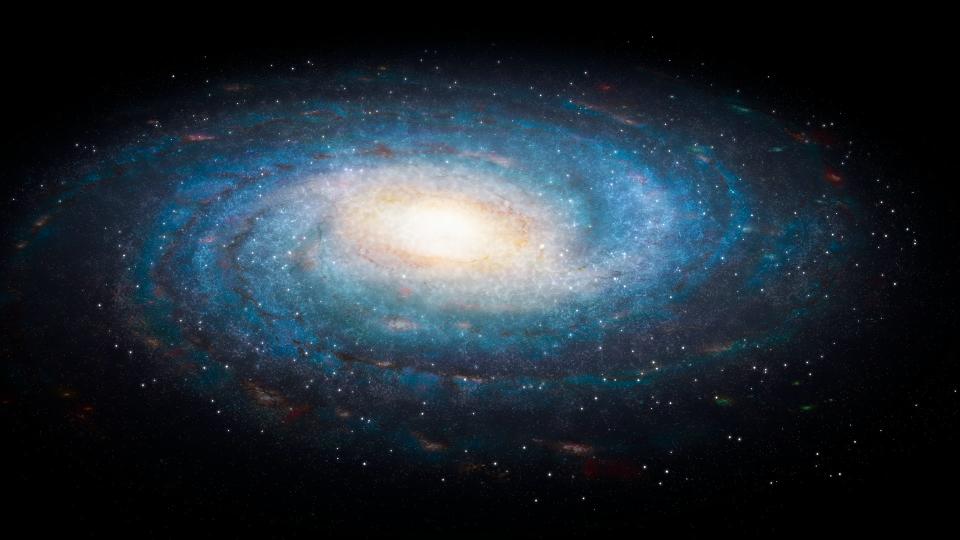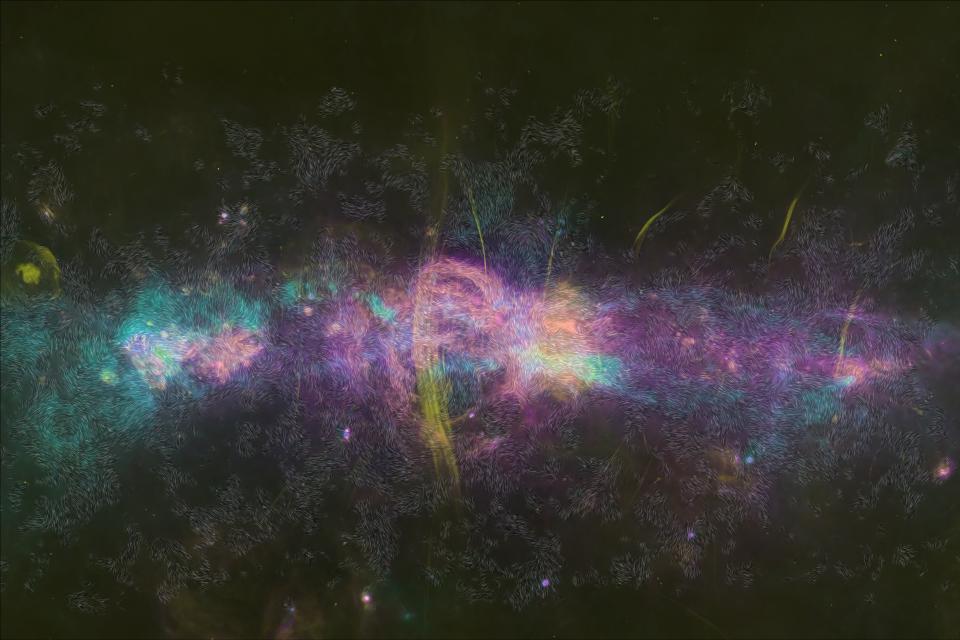The Milky Way is our home galaxy, but how well do we really know? As part of a NASA-funded project, a team led by Villanova University researchers has obtained an unprecedented view of the central engine at the heart of our galaxy.
The new map of this central region of the Milky Way, which took four years to compile, reveals the relationship between magnetic fields at the heart of our galaxy and the cold dust structures that inhabit it. This dust forms the building blocks of stars, planets, and, ultimately, life as we know it. The central engine of the Milky Way drives this process.
This means that a clearer picture of dust and magnetic interactions fosters a better understanding of the Milky Way and our place within it. The team’s findings also have implications beyond our galaxy, providing a glimpse into how dust and magnetic fields interact in the central engines of other galaxies.
Related: How do we know what the Milky Way looks like?
Understanding how stars and galaxies form and evolve is a critical part of the origin story of life — but, until now, the interaction of dust and magnetic fields in this process, particularly within our own galaxy, has been overlooked.
“The center of the Milky Way and most of the space between stars is filled with a lot of dust, and this is important for the lifetime of our galaxy,” David Chuss, research team leader and physics professor at Villanova University, told Space . com. “What we looked at was light emitted from these cool dust grains produced by heavy elements that form in stars and dissipate when those stars die and explode.”

A complex picture of the Milky Way’s magnetic fields
At the heart of the Milky Way is a region known as the central molecular belt, which is packed with about 60 million solar masses of dust. The temperature of this massive dust reservoir is about minus 432.7 degrees Fahrenheit (minus 258.2 degrees Celsius). That’s just a few degrees above absolute zero (minus 460 Fahrenheit), the hypothetical temperature at which all atomic motion would cease.
Also located at the heart of the Milky Way is hotter gas that has had its electrons removed, or “ionized,” and exists as a state of matter called “plasma.”
“Radio wave observations in this region have these beautiful vertical elements that trace magnetic fields in the hot ionized plasma component in the center of the Milky Way,” Chuss said. “We tried to figure out how this relates to the cool dust component.
The team also wanted to know how this cool dust aligns with the magnetic fields at the heart of the Milky Way, which would also show how these magnetic fields are oriented. Such an orientation is referred to as “polarization.”
Chuss and his colleagues received funding from NASA to investigate this dusty central zone using the Stratospheric Observatory for Infrared Astronomy (SOFIA), a telescope orbiting the globe at an altitude of 45,000 feet (13,716 meters) on board Boeing 747 planes.
The project’s CMZ Polarimetric Far-Infrared Reconnaissance (FIREPLACE) created an infrared map spanning approximately 500 light-years across the center of the Milky Way over nine flybys.
Using measurements of the polarization of the radiation emitted by the dust aligned with magnetic fields, the team inferred the complex structure of the magnetic fields themselves. This was then overlaid on a three-colour map showing hot dust in pink and cool dust clouds in blue. The image also shows radio-wave emitting filaments in yellow.


“This is a journey, not a destination, but this is a very complex thing we’ve found. The directions of the magnetic field change throughout the clouds in the center of the Milky Way,” Chuss explained. “This is the first step in trying to figure out how the field we see in the radio waves across these large organized filaments might relate to the rest of the dynamics of the center of the Milky Way.”
Chuss explained that this complex picture of magnetic fields was what he and the TINEPLACE team hoped to see with the new SOFIA map; the observations agreed with smaller-scale infrared and radio wave observations previously made of the Milky Way’s core. Where this new map comes into its own, however, is the sheer scale. It manages to reveal some regions that have never been mapped before. The detail that goes into it is amazing too.
RELATED STORIES:
—A new map of the Milky Way reveals the amazing mess of our galaxy
—The Milky Way galaxy could have a different shape than we thought
—3.3 billion Milky Way objects revealed by a massive astronomical survey
“I think we have a lot of work to do to ultimately reach the conclusions here. One of the things that I think is interesting about this is that some of the areas seem to be in the same direction as the filaments in radio waves, some of which appear to be consistent with the direction of the dust farther out in the disk,” Chuss said. “It is understood that perhaps the large-scale field in the disk of our galaxy and the vertical field that we observe in the center of the Milky Way are connected.”
He and the team will continue to analyze the SOFIA data over the next two years, and he hopes that this work will inspire theorists to come up with some new models to explain what is happening at the heart of our galaxy.
A preprint version of the SOFIA data is published on the arXiv paper repository.